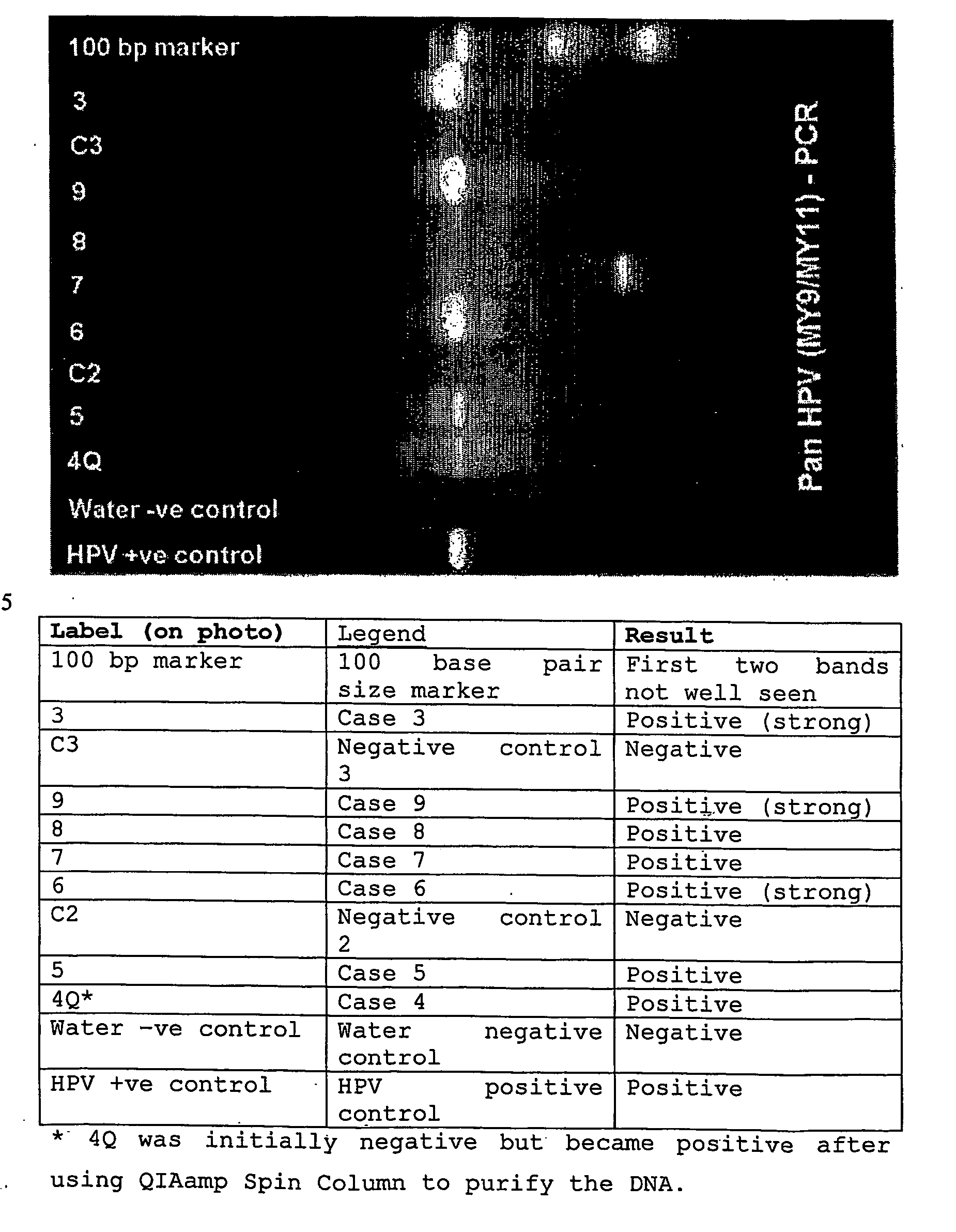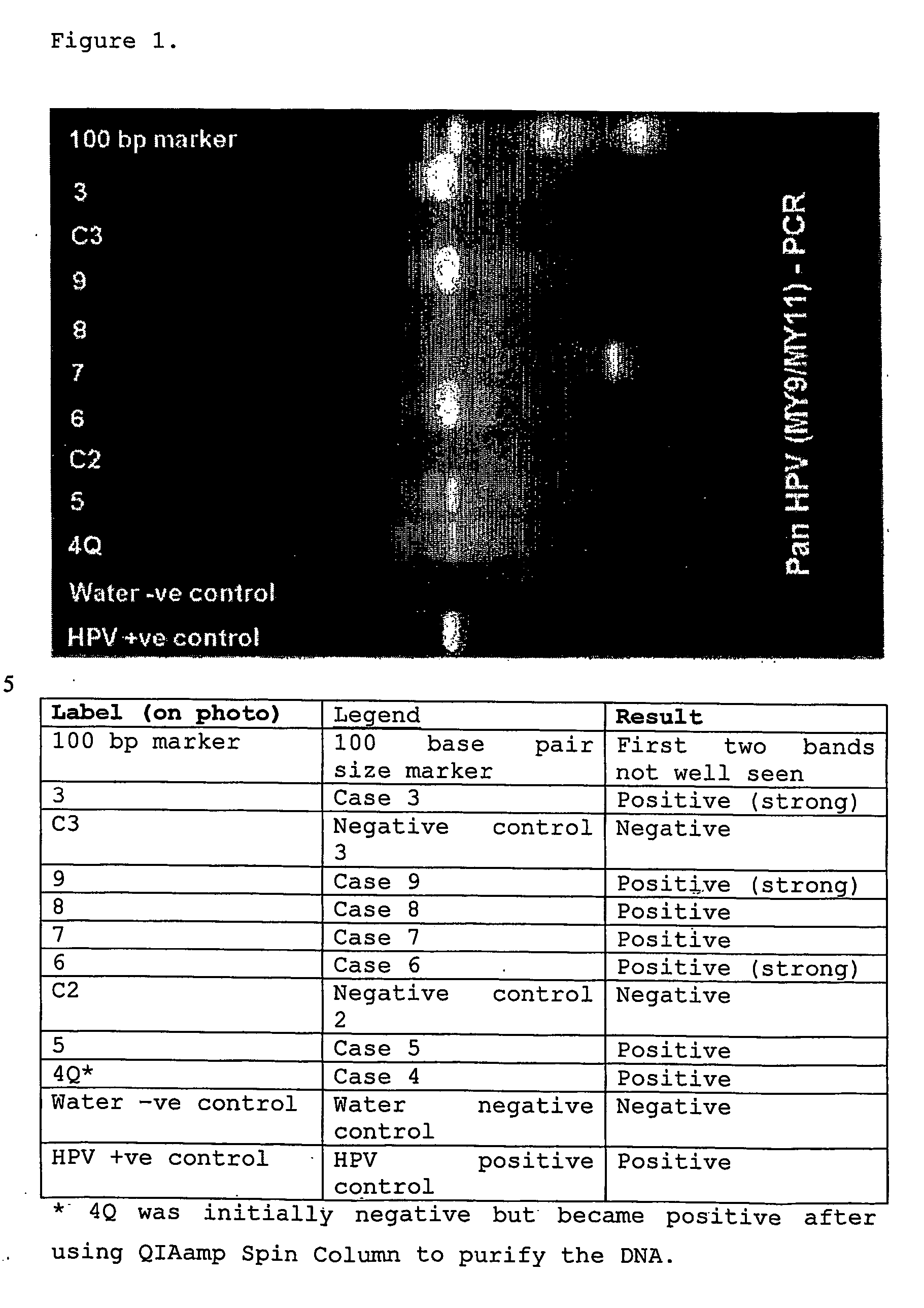Methods of collecting and transporting vaginal discharge for detection of infectious organisms and to facilitate cervical cancer screening
a vaginal discharge and infectious organism technology, applied in the field of vaginal discharge collection, storage and transportation, can solve the problems of stigmatization (psychologically), offensive insertion of foreign objects into the vagina, and the disadvantage of stigmatization
- Summary
- Abstract
- Description
- Claims
- Application Information
AI Technical Summary
Benefits of technology
Problems solved by technology
Method used
Image
Examples
examples
1. Detection of HPV in vaginal discharge.
[0059] We were able to detect HPV in air-dried vaginal discharge from 45 samples (100%) obtained from women with histological confirmation of cervical HPV infection or cervical neoplasia.
[0060] We extracted DNA from the specimens using the following protocol: [0061] 1. Add 600 ul Cell Lysis Solution and 3 ul Proteinase K (20 mg / ml). Vortex to mix and incubate at 56° C. overnight. [0062] 2. Cool sample to room temperature (RT). Remove the specimen using a sterile long 10 ul pipette tip fitted to an autopipette and expel all lysate by pressing it against the inside of the tube. [0063] 3. Add 200 ul Protein Precipitation Solution to the cell lysate. Vortex vigorously at high speed for 20 sec. to mix. [0064] 4. Centrifuge at 14,000 rpm for 5 min. The precipitated proteins will form a tight pellet. If the protein pellet is not tight, repeat the centrifugation. [0065] 5. Pipette the supernatant containing the DNA (leaving behind the precipitated...
PUM
 Login to View More
Login to View More Abstract
Description
Claims
Application Information
 Login to View More
Login to View More - R&D
- Intellectual Property
- Life Sciences
- Materials
- Tech Scout
- Unparalleled Data Quality
- Higher Quality Content
- 60% Fewer Hallucinations
Browse by: Latest US Patents, China's latest patents, Technical Efficacy Thesaurus, Application Domain, Technology Topic, Popular Technical Reports.
© 2025 PatSnap. All rights reserved.Legal|Privacy policy|Modern Slavery Act Transparency Statement|Sitemap|About US| Contact US: help@patsnap.com


